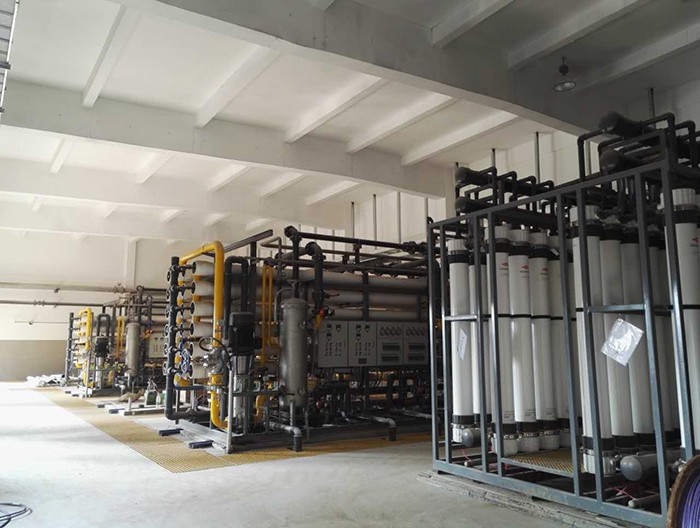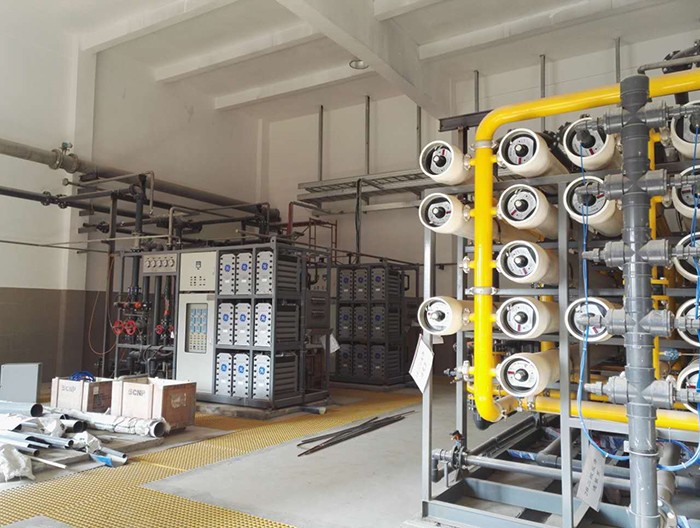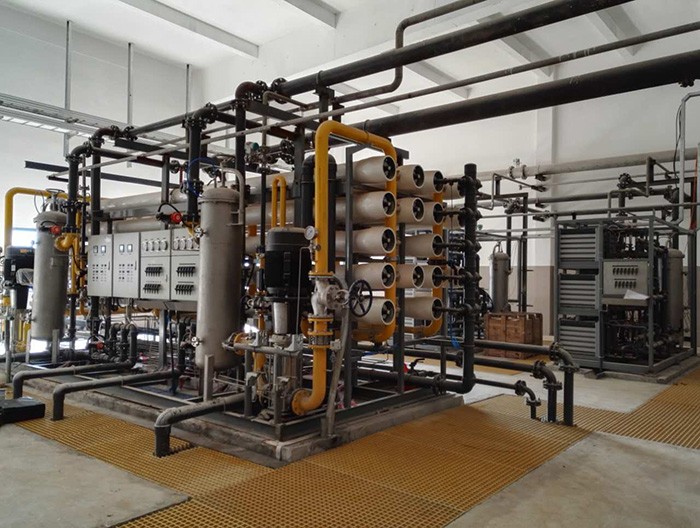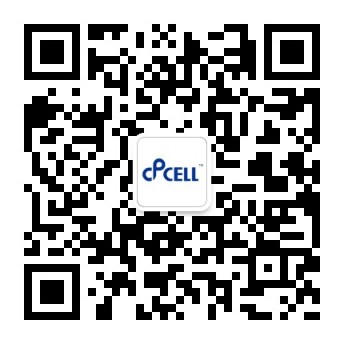Project Description: The planned capacity of the power plant is 4×300MW circulating fluidized bed coal gangue generator set. The construction scale of this project is 2×350MW domestic circulating fluidized bed supercritical condensing unit. The company designs and constructs the water reuse project for power plant construction. The water source of the project uses surface water, and after ultrafiltration, two-stage reverse osmosis, EDI, the effluent reaches the reuse standard.
The 47*2 m3/d boiler feed water treatment system of the power plant, the comprehensive analysis of the integrated influent water quality report is as follows: The specific indicators of the system effluent after the circulating cooling water is treated are as follows:
| Name | Unit | Index value |
| hardness | mmol/L | ~0 |
| Silica | mg/L | ≤10 |
| Conductivity (25 ° C) | mS/cm | ≤0.10 |
| TOC | mg/L | ≤200 |
Project process:
After the hydraulic engineering professional coagulation, clarification, filtration, Wujiang surface water → ultrafiltration booster pump → self-cleaning filter → ultrafiltration device → ultrafiltration water tank → first-stage reverse osmosis booster pump → first-stage reverse osmosis security filter →First-stage reverse osmosis high pressure pump→first-stage reverse osmosis unit→first-stage reverse osmosis water tank→secondary reverse osmosis high pressure pump→secondary reverse osmosis safety filter→secondary reverse osmosis unit→secondary reverse osmosis water tank→EDI Booster pump → EDI security filter → EDI unit → Demineralized water tank → Demineralized water pump → Main plant and other desalinated users.
Introduction to the project process:
This project design 2 × 52 t / h ultrafiltration device (net output) + 2 × 48t / h first-stage reverse osmosis device + 2 × 44 t / h two-stage reverse osmosis device + 2 × 40 t / h EDI device, 1 with 1 preparation.
Ultrafiltration system: water recovery rate ≥90%, effluent pollution index SDI ≤ 2, effluent turbidity ≤ 0.2NTU
First-stage reverse osmosis unit: ≥98.5% during the salting test period, ≥97% in three years, and the water recovery rate ≥80%
Two-stage reverse osmosis device: the salt rejection rate is ≥97% during the trial operation, ≥96% within three years, and ≥95% within five years.
In addition to meeting the salt rejection rate, the chemical index of the production water needs to meet the water requirement of the EDI device. The specific indicators are as follows: active silicon <250mg/L; carbon dioxide <2mg/L; iron <50mg/L; manganese <50mg/L; TOC< 500mg/L; hardness (calculated as CaCO3) <500mg/L; conductivity <20μS/cm (25°C); pH range 5~9; SDI15<1; water recovery ≥85%
EDI device: water recovery rate ≥ 90%; resistivity ≥ 15 megohm (25 ° C); silica ≤ 10 mg / L; TOC ≤ 200 mg / L;
Project Engineering Picture: Workshop in the system

Project Engineering Picture: EDI device in the system

Project Engineering Picture: RO device in the system


Scan It